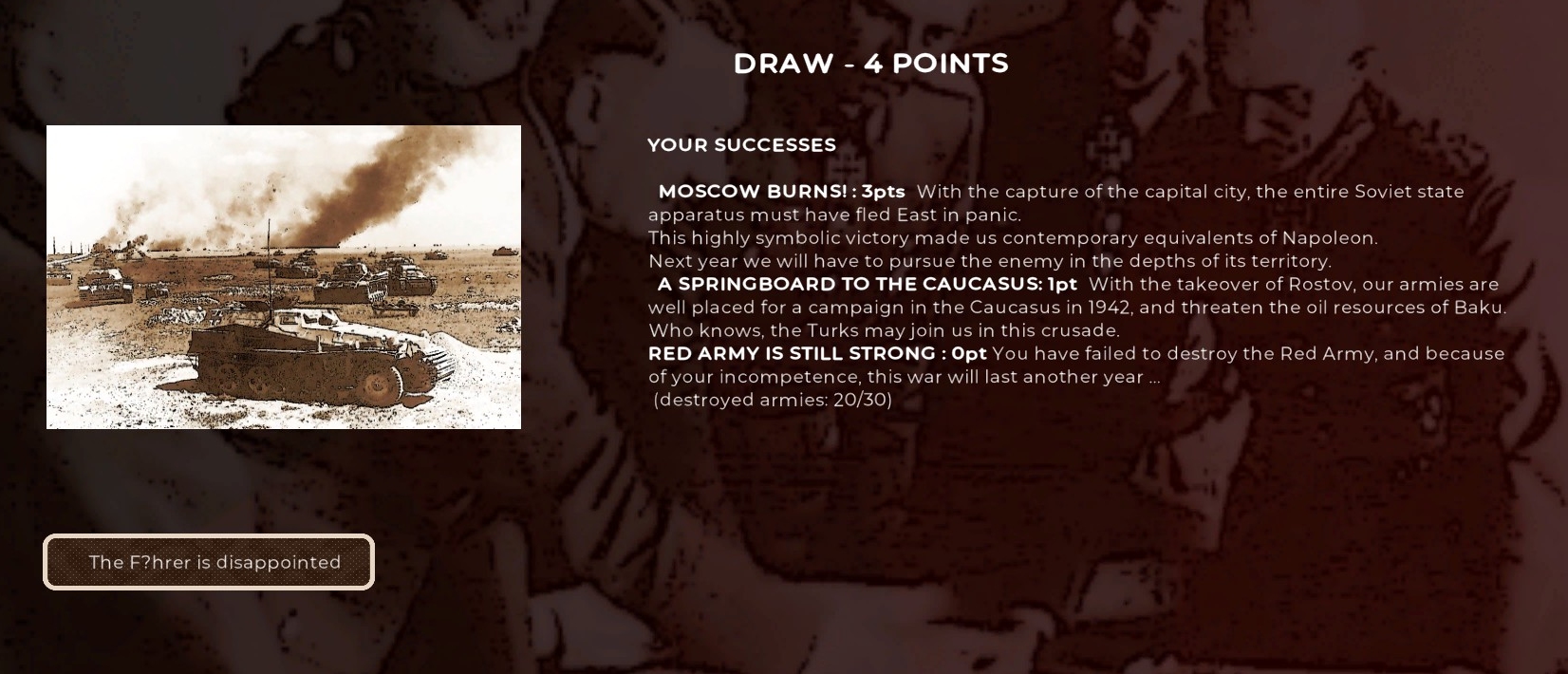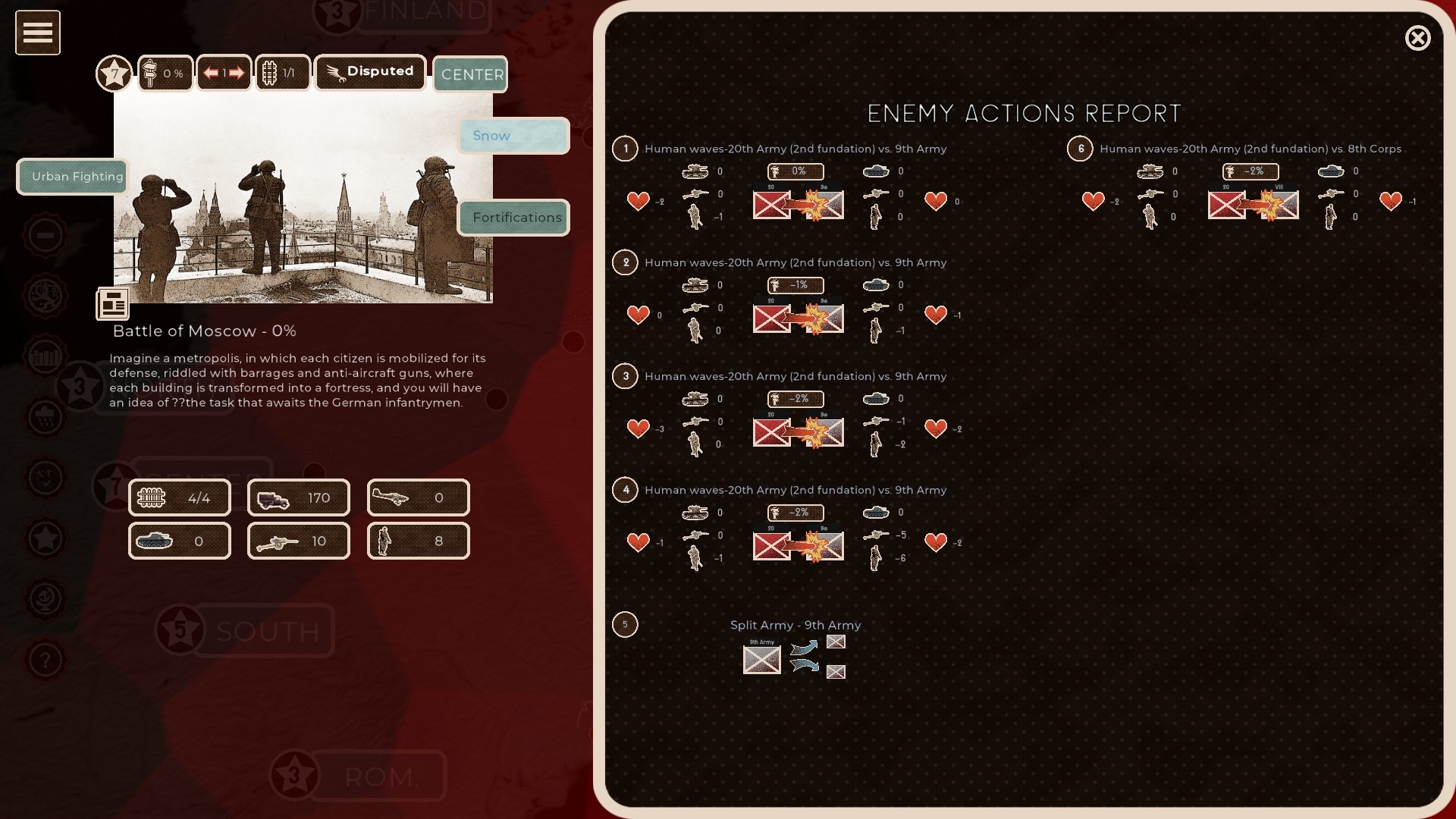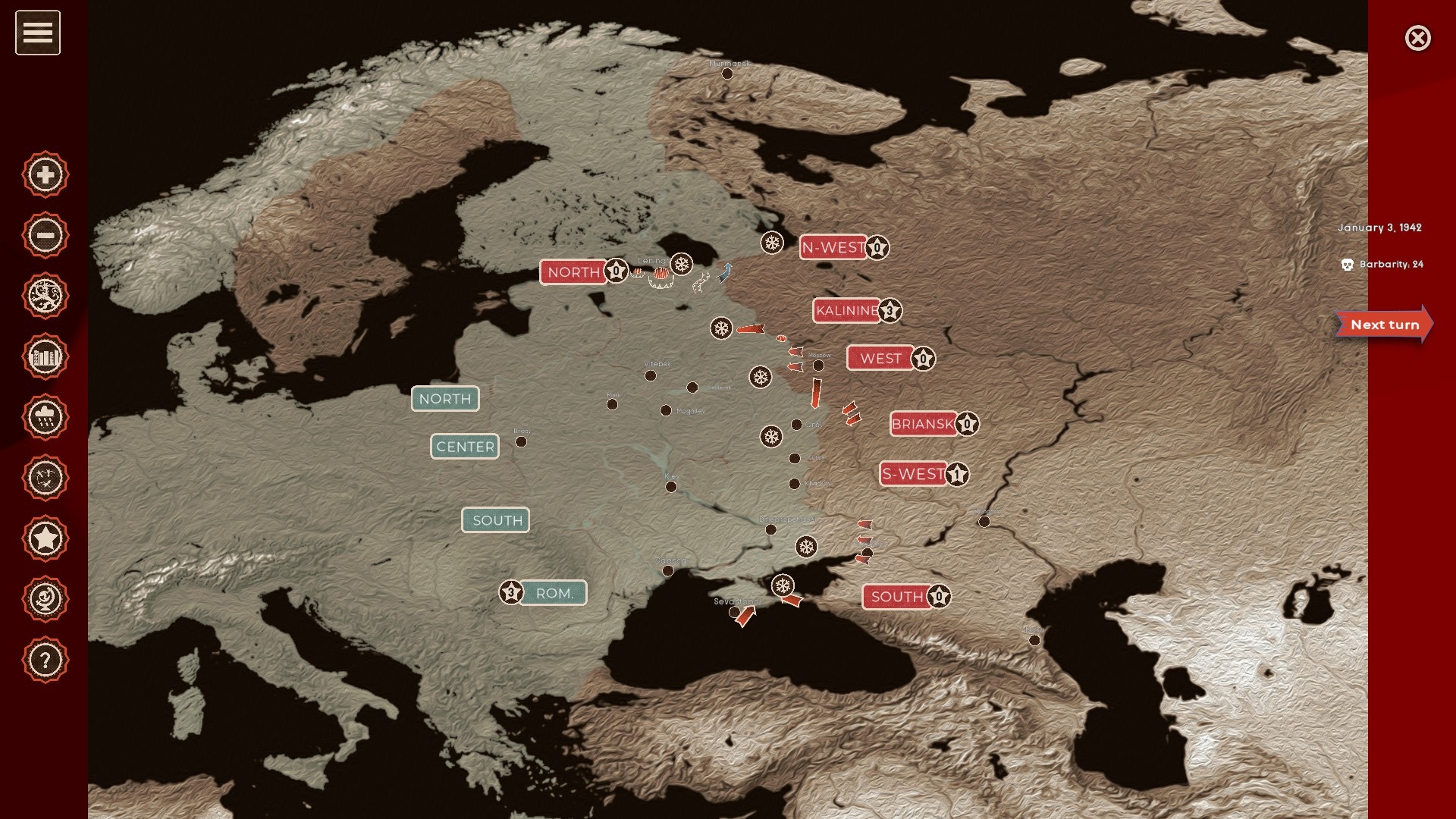The Flare Path: Stirs Cauldrons
Barbarossa boiled down
Are we capable of coding an AI that will play this game competently and plausibly? I wish more wargame developers asked themselves this question early in the design process, and treated answers of “possibly” and “not sure” as reasons to head back to the drawing board. If they did we'd have less warfare fare but more games that convince and challenge the way Cauldrons of War: Barbarossa convinces and challenges.
There's not a hex, square, or map province to be seen in Maestro Cinetik's absorbing £5 recreation of Hitler's biggest miscalculation and the unorthodox approach to geography allows the title's Operation Barbarossa to bite and humble like an Arkhangelsk winter.
Early Accessable since late May, Cauldrons resembles a sophisticated track-heavy solitaire board wargame. You don't take Moscow, Leningrad, Kiev etc. by cattledriving German army counters eastward across a vast honeycomb of hexagons, you do it by moving them along invisible branching pathways. Every length of 'track' is a historical operation. Operational progress is measured as a percentage and advanced, or regressed, via a neat abstracted tactical layer in which battles are fought, breakthroughs achieved, pockets formed and mopped up.
The system ensures believable Barbarossas and manageable ones. In other Eastern Front wargames with fronts that stretch from the Arctic Circle to the Black Sea a single turn might involve 100+ separate decisions. In this one you generally end week-spanning turns after issuing around 25 commands.
For every action you actually instigate during a turn there'll be two you want to instigate but can't because of Command Point limitations. All operations are linked to a specific HQ (Army Groups North, Centre, and South, plus Finland and Norway in the case of the Germans) and each HQ has a limited pool of command points. One turn you might use Army Group South's fund of 5 CPs to mount an assault with 6th Army and refuel First Panzergruppe at Kharkov, and resupply the Hungarians, entrench the Italian Expeditionary Corps, and split 17th Army on the road to Rostov. The next you might use it to regain air superiority and eliminate a pocket at Kharkov, and hunt partisans and refit the Slovaks down south.
The fact the game's swingeing abstractions don't distract or detract is largely down to the sizeable order palette and the constant stream of thought-provoking, background-info-furnishing inter-turn strategic choices. The latter help Maestro Cinetik tell the story of Barbarossa in the kind of rounded, compelling way more traditional wargames rarely manage.
Whether it's via an event pop-up or through the operational cut and thrust, almost every turn the Axis player gets a small reminder of why Panzers never rolled through Red Square or along Nevsky Prospect. As the main October 1941 to January 1942 scenario progresses (there are also shorter scenarios covering Operation Typhoon and the Moscow counter-offensive), bad roads, expansive geography, unhelpful weather, and political interference slowly conspire, gnawing at Teutonic optimism and proficiency the way starving soldiers gnaw on frozen turnips. Overall German victories are possible* but play as the Axis and late game a good proportion of your units are likely to be crippled by ammo and fuel shortages and sporting black 'exhaustion' hearts.
*Apparently. The best I've managed in 10 hours of play is a draw.
One of the game's most insightful bits of shorthand relates to logistics. Automatic resupply between turns is dependent on local rail infrastructure and seldom meets the needs of busy frontline units. Manual resupply costs CPs and causes wear and tear to precious trucks. Also denuded by partisan mischief and, if you neglect air superiority, interdicting Soviet aircraft, that shrinking truck pool can become a real cause for concern as 1942 approaches.
Just as pleasing as truck attrition is the way Maestro Cinetik capture, with the lightest of touches, the two-speed nature of the Wehrmacht war machine. Panzer groups and mechanised and motorised infantry are superb at the nippy breakthroughs that create the kessels from which the game takes its name, but unless you eliminate those trapped enemy troop concentrations promptly the fleet-footed German greyhounds can very easily find themselves separated from the plodding mastiffs behind.
The brutality of the fighting in the East is acknowledged by a stark Barbarism stat that keeps an eye on your treatment of PoWs and - if you're playing as the invaders - your behaviour towards partisans and Jews. German atrocities like the massacre at Babi Yar seem to occur whatever your stance but there are opportunities here and there to curtail the crimes of the murderous SS and their equally despicable stooges. Although some brutal acts lubricate advances, the higher your Barbarism score the more determined the opposition you're likely to encounter on the road to Moscow and beyond so the incentives to show a modicum of decency aren't exclusively moral.
While an integrated wiki sheds some light on the various orders types and suggests when certain orders should be used, Cauldrons keeps most of its maths well hidden. Would now be a good time for a Second Panzegruppe “blitzkrieg” or should I try another “assault”? Instinct and, if you've been playing for a while, experience are your best/only odds predictors. Once you've hurled tired or depleted units at an entrenched defender without first softening up that defender with arty and aircraft, you probably won't do it again. Once you've seen the Soviet AI use costly Human Wave tactics to bludgeon an opening in your line, you'll probably have fewer scruples about using them yourself when playing as the Communists.
* There's no manual at present.
The unusual format makes AI assessments tricky. How much of the game's longevity-lending leatheriness is down to a clever silicon opponent and how much to well pitched victory conditions and ingenious scripting? I'm not entirely sure, but I've seen enough of the core scenario to know it's flexible and persuasive enough to withstand multiple playthroughs. In the midst of one of those four-to-five hour VP hunts I have no trouble believing I'm fighting a highly motivated enemy led, at Moscow and Leningrad at least, by high-quality commanders. Yes, at times the Soviet AI can seem masochistic (see above) but at this stage of the war the squandering of Red Army units in foolish attacks and stands wasn't exactly unheard of.
I've no issue with the game's quirky refusal to tell me exactly how tired my units are, but the Fog of War that hides enemy unit size and composition (foes can be individually reconnoitred for a 1CP fee) is a little too opaque for my taste. Harder to ignore are my misgivings about the way Cauldrons displays data on the main map and operational screens. Not only is it impossible to see which ops are linked to which HQs without clicking on them, you can't see which units are committed or how ops are progressing without switching screens. Before the devs embark on the sequel (I understand Barbarossa is to be the first of a series of Eastern front offerings) it would be lovely to see them take a sledgehammer to their GUI.
A cheaper, friendlier alternative to the excellent Decisive Campaigns: Barbarossa, Cauldrons of War: Barbarossa's natural comrades are New Wave wargames like Rebel Inc: Escalation, Radio General, and Radio Commander (£6 on Steam until August 20!). If you like your military entertainment novel, history-steeped, pacy and as tough as KV-2 armour, you should have no trouble whatsoever extracting five pound's worth of pleasure from this beautifully distilled Barbarossa evocation.
* * *













